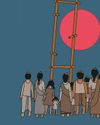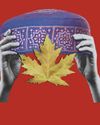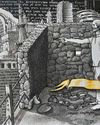
For millions of devout Hindus, this mound is the birthplace of Lord Ram; for others, it is the posited birthplace of four of the first ten Tirthankars of Jains; yet others see this as the place where the Buddha is believed to have preached from; or identify it as the mazaar of Hazrat Sheesh Paigambar, the dargah of Badi Bua, revered as Ayodhya’s patron Sufi saint. As the religious dominates all understanding of Ayodhya today, what do we truly know about its pre-modern history?
Around the fifth century BCE, in the kingdom of Kosala lay a busy town at the intersection of two major routes: one going from Sravasti in the north to Pratishthana in the south, and the other going to Taxila in the west from Rajagriha in the east. This town was called Saket. King Prasenjit ruled it from his capital, Sravasti, about 80 kilometres from Saket. Prasenjit is also known as the king of Kosala, which is acknowledged to be another name for Ayodhya.
As trade flourished in the region, Saket came to be coveted by the neighbouring kingdoms of Kashi (Banaras) and Magadha. The Magadha king Ajatashatru annexed Saket and it remained a part of the Magadha Empire until its fall in 200 BCE. Although Saket remained a business centre for 300 years (485–200 BCE) it never grew as a political centre. However, it continued to attract to its bounteous gardens preachers like the Buddha and Mahavira, who proselytised there.
Saket and Ayodhya
Bu hikaye Outlook dergisinin February 01, 2024 sayısından alınmıştır.
Start your 7-day Magzter GOLD free trial to access thousands of curated premium stories, and 9,000+ magazines and newspapers.
Already a subscriber ? Giriş Yap
Bu hikaye Outlook dergisinin February 01, 2024 sayısından alınmıştır.
Start your 7-day Magzter GOLD free trial to access thousands of curated premium stories, and 9,000+ magazines and newspapers.
Already a subscriber? Giriş Yap

The 'Invisible' Dalits
The debate over sub-categorisation of castes is likely to shape the political discourse in the upcoming state elections

Caste Census: To Conquer Or Conserve?
The caste census is generating heated debate, but even its most ardent proponents are not able to articulate a plan about how to use the resulting data

THE FATEFUL COMEDY
Actor-director Rajat Kapoor talks about adapting Fyodor Dostoevsky's The Brothers Karamazov into a Hindi play

Mad Hatter
When a leader takes off his topi and holds it in his hands while appealing for votes, it signals something extraordinary

Circle Within Circles
The caste question in Muslims.

Backward March
The Maratha reservation question may continue to mire the next government in the state

The 69% Exception
Quota within quota: lessons to be learned from Tamil Nadu

United Indifference
The perils of tweaking tribal identities

Two Nations, Two Destinies
The widely differing balance of power between the military and civilian leadership in India and Pakistan has significantly impacted democracy in the two countries

Crème de la Crème
The mainstream society thinks reservations are against right to equality. It’s high time they are seen in the context of right to justice.